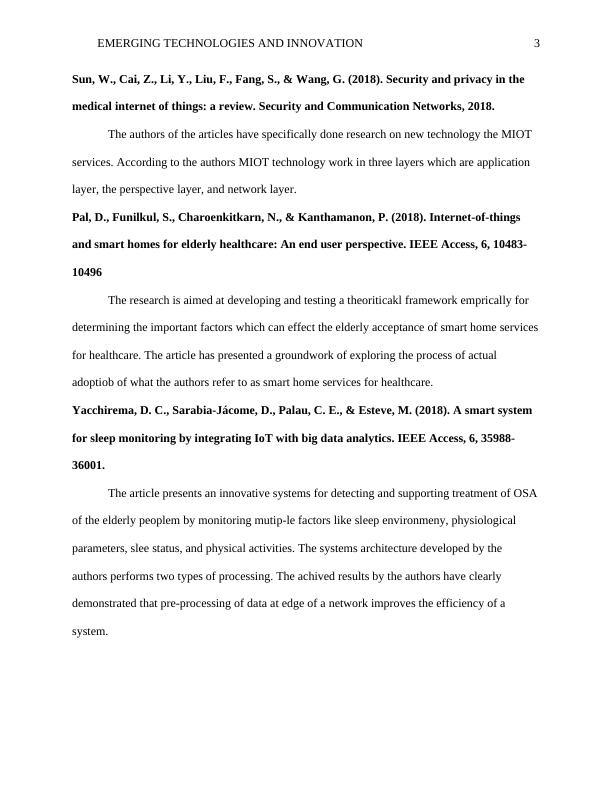Annotated Bibliography: Emerging Technologies and Innovation
The assignment is a review project on the taxonomy for Internet of Things for smart healthcare, focusing on technologies, challenges, and opportunities. The aim is to discuss the limitations of using IoT wearable devices in healthcare systems, mitigate those limitations, ensure the security and privacy of using IoT wearable devices, understand the benefits of IoT wearable devices for users, and address the privacy concerns of patients regarding their data being collected. The assignment requires the inclusion of 30 references, a literature review section, and double referencing of all the references.
Added on 2023-04-25
About This Document
Annotated Bibliography: Emerging Technologies and Innovation
The assignment is a review project on the taxonomy for Internet of Things for smart healthcare, focusing on technologies, challenges, and opportunities. The aim is to discuss the limitations of using IoT wearable devices in healthcare systems, mitigate those limitations, ensure the security and privacy of using IoT wearable devices, understand the benefits of IoT wearable devices for users, and address the privacy concerns of patients regarding their data being collected. The assignment requires the inclusion of 30 references, a literature review section, and double referencing of all the references.
Added on 2023-04-25
End of preview
Want to access all the pages? Upload your documents or become a member.




